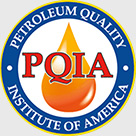
Avoiding common mistakes and regular testing can extend the life of coolants and keep engines running longer and stronger.
Heating systems, cooling towers, on-highway vehicles, off-highway vehicles and most other systems use some form of antifreeze. Despite its name, antifreeze serves as a coolant in these applications as well as a freeze preventative.
All commercial antifreezes contain either ethylene glycol or propylene glycol bases, along with an inhibitor. The glycol makes up 95 percent of the base with the inhibitors and water making up the rest. Both its coolant and freeze preventative properties are the result of the mix of glycol and water, which effectively lowers the freeze point and increases the boiling point of water.
In general, higher operating temperatures mean higher potential for damage. Today’s engines run hotter than ever before. The average diesel engine operated at about 160 degrees Fahrenheit 50 years ago. Today, an average diesel engine can run between 230 and 250 degrees. This makes maintenance and testing critical.
Related: Learn More About PetroChoice’s Coolant products
A mistake users often make is not paying attention to the glycol concentration. This is usually the result of not topping off or changing coolant fluid correctly and can cause serious damage to engine components.
“Low concentration on fully formulated coolant can cause excessive corrosion to steel and aluminum components,” Greg Wyatt, Commercial Vehicle Manager for PetroChoice and Certified Lubrication Specialist, said. “On diesels where Supplemental Coolant Additives (SCA’s) are important on fully formulated coolants, low concentration can cause liner pitting, and if left untreated, can pit through the liner causing engine failure.”
Wyatt said glycol concentration can be adjusted, but proper testing is necessary to determine whether it is better to start from scratch.
“Glycol concentration can be adjusted up or down by draining coolant and adding de-ionized water to heavy glycol concentration, or adding new coolant to low glycol concentrations,” Wyatt said. “Laboratory coolant testing should be performed to determine if existing coolant is worth trying to save or if a complete drain, flush, and refill would be the best course of action.”
Maintaining appropriate inhibitor levels is also an important part of maintenance. Not caring for equipment or coolants properly can lead to elevation or degradation of SCA levels.
“Overdosing conditions occurs if SCA’s are added without proper testing either by glycol test strips or laboratory testing. Typically overdosing is caused by changing pre-charging coolant filters too often or by adding liquid SCA’s when it is not needed. Overdosing can lead to additive drop out, and the additives will develop into a thick sludge that cannot be dissolved and leads to clogging of radiator cores, oil cooler tubes and engine overheating” Wyatt said. “Under-dosing occurs when the additives become naturally depleted through use, and leads to corrosion, pitting and rust.”
Related: The Importance of Lubricant Analysis
One of the more common reasons for SCA level degradation is using an incorrect coolant. Wyatt advises that all operators consult their manufacturer’s guide before choosing a coolant. Inhibitors can also be diluted out by mixing different coolants together. This can be corrected, but Wyatt again stressed the importance of proper testing.
“Nitrites and Molybdates are the most common to drop out,” Wyatt said. “This can be corrected, but laboratory testing must be done to determine corrective procedure to bring back to optimum coolant efficiency.”



